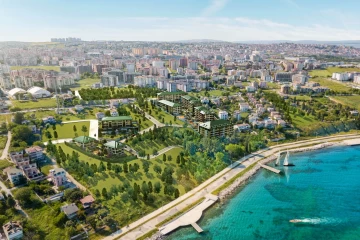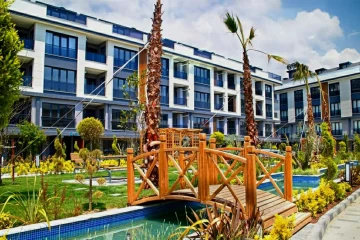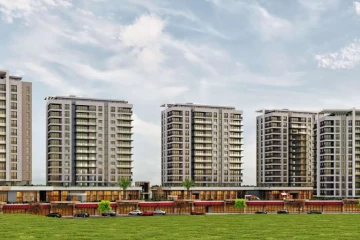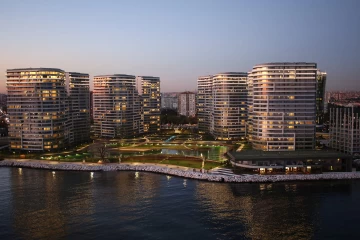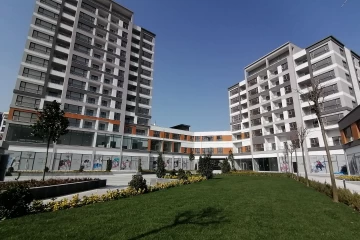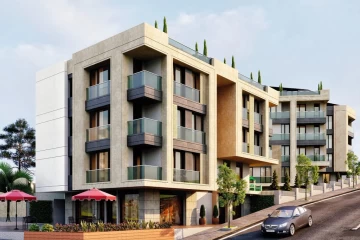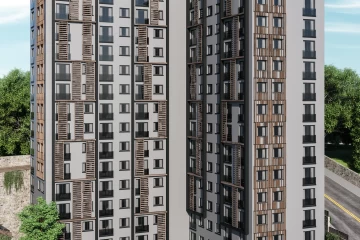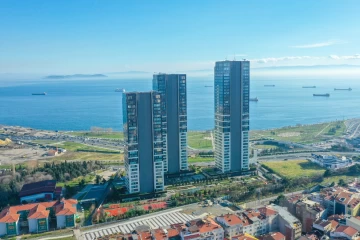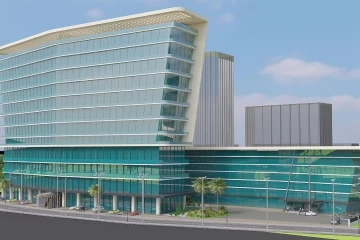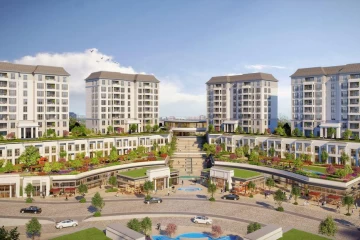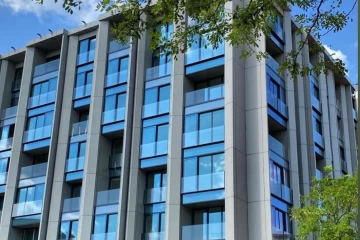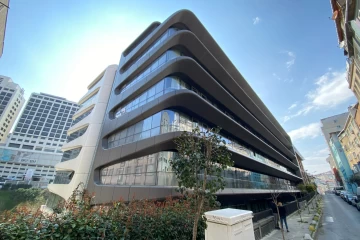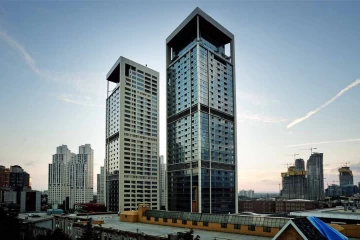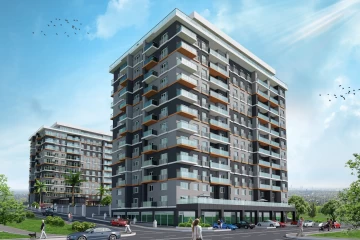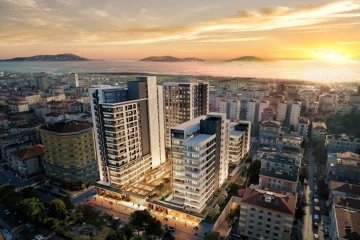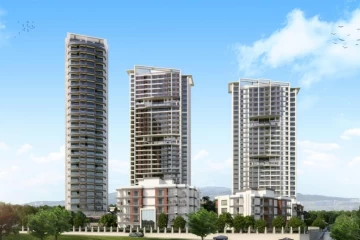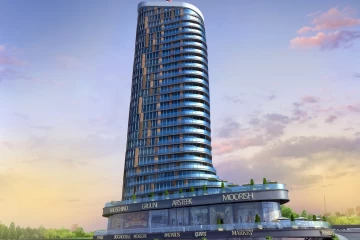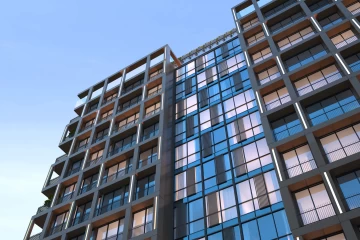Istanbul Metro Lines Network.. A story of success for endless ambition

Content Index
The metro network in Istanbul is a witness to the strength of the Turkish state and crystal evidence of its ability to develop the infrastructure network. It is a success story that began in 1989 and is still being written until now, Istanbul has the strongest transportation network in Europe, which serves nearly 16 million people, divided between 12 million Turks and 4 million foreigners, the network is a major part of the infrastructure development that the Turkish state has worked on, and is still developing it, especially since the state aims to extend the area of Istanbul to reduce the overcrowding of the old center, especially the new areas such as Basaksehir, KayaSehir and Arnavutkoy, the areas surrounding the new Istanbul airport, and improving the transportation network is one of the national plans that the state relies on in light of its targeting to increase the volume of foreign direct investment in general, and real estate investment by foreigners in particular, Transportation network in Istanbul is characterized by its ability linking different regions with each other, especially linking the new areas with city center on one hand, and also linking the Asian side with the European side.
The metro network in Istanbul is characterized by its diversity and strength. There are trams, subways, trains and metrobus, which is a major artery in the heart of the city that never sleeps, and transports nearly 2 million and a half citizens daily, the network that started in 1989 with one metro line has now reached 8 Metro lines with a length of 275 km, while the lines that are under construction reach 180 km, but they are targeting at the end of 2028 that this network will reach 831 km, this article to guide you to know everything about the metro network in Istanbul.
Historical brief:
Although the first master plan for a metro network in Istanbul was drawn up in 1912 by the French engineer L. Gwerbe, which was to connect Al-Fatih and Sisli district, but the project was not implemented and this master plane has become a landmark in the Istanbul Technical University Museum, since 1912 until 1989, Turkey tried to establish a metro network, but it failed but in 1989, it started working in construction work for the first railway system, and the M1 line which was called “Haviv Metro” (which in Arabic means “light metro”). Although it was established as a multi-level line, it has many carriages and platforms that are shorter than usual for a traditional metro line, this is why they called it "light metro".
First, the subway lines:
The M1 metro line connects Yenikapi station and Ataturk International Airport station in the European side:
This is the oldest metro line in Istanbul, which was established in 1989, and it connects Yenikapi with Ataturk Airport, in the beginning it was called “Haviv Metro” (which in Arabic means “light metro”).
The M2 metro line connects Yenikapi and Haji Osman in the "European side:
The work of M2 metro line had been started on September 11, 1992, and it faced many challenges due to the discovery of many archaeological sites during the excavation process, which contributed to slowing down or even stopping many times, especially in the south; Because of the seismic activity in Istanbul, the entire network was built using the excavation and backfill method, which resists earthquakes with a strength of up to 9.0 on the Richter scale.
The first part of this line, which was connecting Taksim and Levent, was opened on September 16, 2000, with a length of 8.5 km, and 6 stations similar in shape but in different colors, In 2000, the metro capacity at that time was 130,000 passengers per day, but in 2009 the locomotives were upgraded to be 34 trains.
A northern expansion was also made for it to reach Maslak, which entered service on September 2, 2010, then the last station was attached to it Dar Al Shafaqa. In 2014, the southern extension of the line entered from Taksim to Yenikapi, passing through the Golden Horn, through the Gulf Station, on the bridge and underground across the Historic Peninsula, with an expansion of 5.2 km in length and an increase of four stations, at a total cost of 593 million dollars, the YaniKapi station now is an interchange station at which the M2 line intersects with the M1 line and the Marmaray line.
- M3 metro line connects Kirazli and Basaksehir, it is at "European side".
- M4 metro line connects Kadikoy and Tushantepe, it is at "Asian side"
- M5 metro line connects Üsküdar and Çekmaköy, it is at “Asian side”
- M6 metro line connects Levent and Boğazci University, it is at "European side".
- M7 metro line connects Sisli "Mejidiyekoy" and Mahmut Bey, it is at "European side".
- M9 metro line connects Olympiat and a marine station in Basaksehir, it is scheduled to be extended until it reaches Ataköy in the "European side".
Tramway
There are 5 lines of tramways in Istanbul, transporting thousands of passengers between different parts of the city daily, operating through a railway network, running by electric power, and helping tourists to reach the most important modern areas and historical neighborhoods in Istanbul, passengers number uses tram and metro is increasing more than two million passengers per day, and the following are the most famous tramway lines in Istanbul:
- T1 tram line connects Kabatas and Bagcilar, it is at "European side".
- T2 tram line connects Taksim and Tonal, it is at "European side".
- T3 tram line connects Kadikoy and Muta Çarşi, it is at "Asian Side"
- T4 tram line connects Topkapi and Al-Salam Mosque it is at "European side".
- T5 tram line connects Djibali to the Golden Horn and Ali Beykoy, it is at "European side".
Metrobus
It is the main means of transportation in Istanbul, the metrobus route at the E-5 highway is one of the fastest means among public transportation in Istanbul, as it is not affected by traffic, it runs at its own allocated route with a length of 50 km, transporting about one and a half million passengers per day, and linking Istanbul’s different regions with each other, as it starts from “Söğütlüçeşme” station in Asian side of Istanbul, and ends at “Beylikduzu” station at the European side, and it operates 24 hours a day, unlike the rest of the metro lines that operate Until midnight.
Marmaray Train:
It is also one of the lines that connect the Asian side with the European side, and it starts from the Halkalı region of Kucukcekmece to the Gebze district at the end of the Asian side.
2022 is an impressive progress for the Istanbul metro network:
Although the Turkish state has set 2023 for the opening of the metro line connecting to Istanbul's third airport, this line will be opened before the end of this year, in November 2022, according to the Turkish Minister of Transport and Infrastructure statement, Adel Kara Ismailoglu, who announced that, The Istanbul Airport metro line will be operational next November, when the Istanbul Airport metro line will start operating, with its two branches heading east and west towards the heart of Istanbul.
The Istanbul Airport metro line is one of the strategic and vital projects in Turkey, as the Istanbul Airport - Gayrettepe metro line has been planned, providing fast, economic and safe transportation between Istanbul Airport and the city center, and to be integrated with other metro lines.
According to information received from the Ministry of Transport and Infrastructure, while the ministry is currently working on 7 metro lines with a total length of 103 km, 3 of these lines will be operational at the end of this year 2022 and the rest in 2023.
It is also scheduled to open the Sabiha Gökçen Airport line on the Asian side. The (Kadikoy - Kartal - Kaynarca) metro line is 7.4 km long, with a daily capacity of 1.2 million passengers, which guarantees the arrival of passengers to Sabiha Gökçen Airport.
At Ramzy Real Estate Company, we are glad to accompany you on the journey of buying property in Turkey and to provide you with a range of services to make the process smooth and easy , as we are always keen to present a variety of options for residential and investment properties in addition to helping you obtain Turkish citizenship for those looking for it.
Our services:
- Legal advice.
- Property Management.
- After-sales services.
- Legal services and obtaining Turkish citizenship.
- Buying and selling real estate in Turkey.
- For more details, you can contact us via the communication platforms or via the WhatsApp attached on the site.
Editing by Ramzy Real Estate Team ©
Related articles:
Turkish citizenship by investment
Istanbul property prices 2020-2021
Turkish citizenship by buying property
Real estate prices in Turkey 2020-2021
Villas for sale in Istanbul European side
obtain permanent residence in Turkey
cheap apartments for sale in Istanbul 2020-2021
#Ramzy_real_estate #real_estate_investment
#apartments #istanbul #turkish_citizinship




